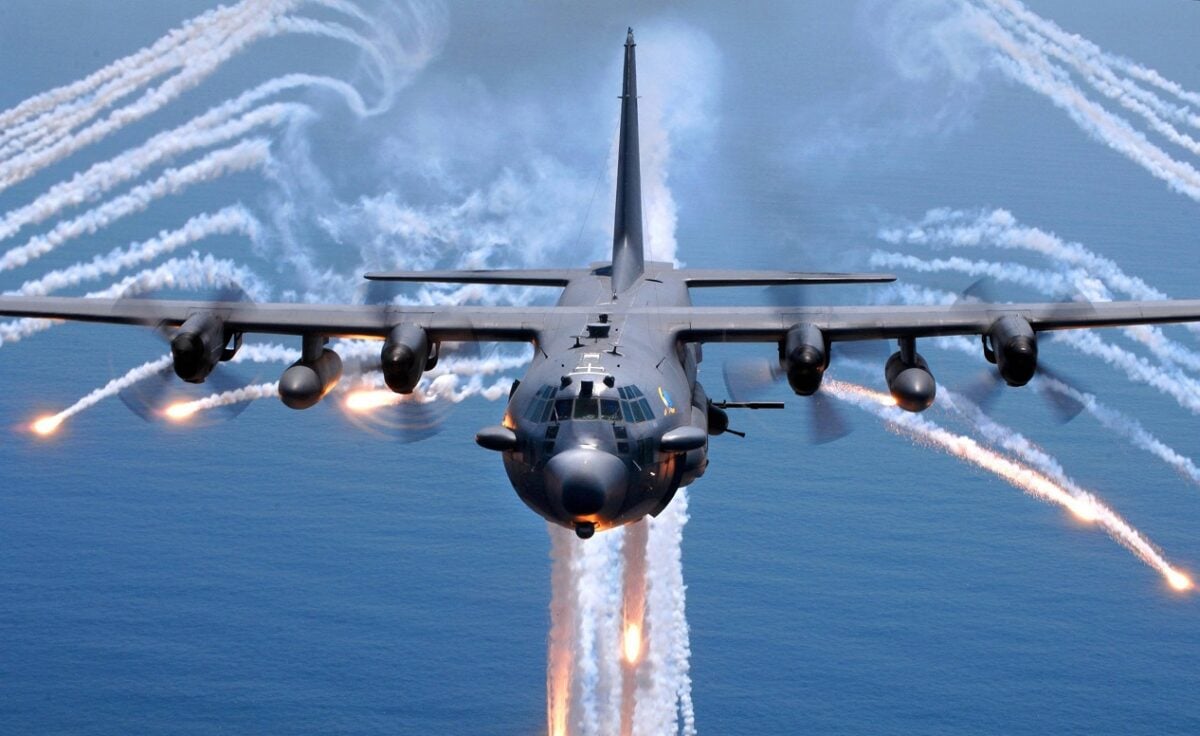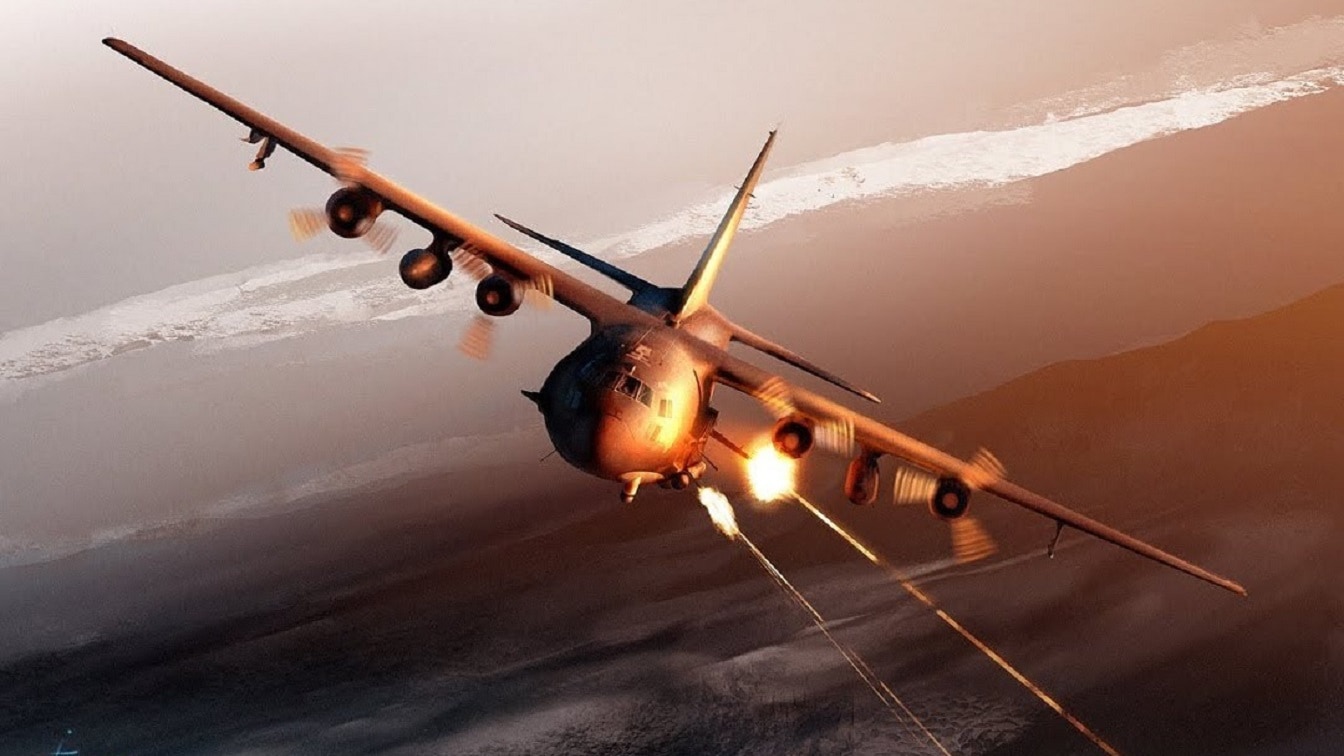The AC-130J Is Getting a Gun Upgrade: The US Air Force’s AC-130 family of gunships has been a constant in every conflict that the United States has engaged in since the war in Vietnam. They have been constantly upgraded and improved, but the one constant has been the decades-old and obsolete M102 105mm howitzer.
The 105mm GAU provides heavy versatile firepower in its close air support, air interdiction, and force protection missions. These aircraft are often seen operating alongside Special Forces units operating far from friendly support.
The Army no longer supports the 1960s technology M102 design, making it obsolescent with replacement parts more challenging to come by. But engineers from the Naval Surface Warfare Center Dahlgren Division have produced a solution. The engineers from Dahlgren characterized the new weapon back in January as more “upgraded rather than entirely new.”
The Navy refers to this howitzer only as the Gun Aircraft Unit (GAU), which is a common characterization of all weapons mounted on aircraft. They also hinted that large-scale upgrades are upcoming.
Some of the Changes on the New Howitzer
One of the first changes visible at the new weapon’s first appearance occurred at Cannon AFB in New Mexico at an event involving the 17th Special Operations Squadron.
The M137A1 recoil system has been replaced; it was developed by the Army in 1964 so that the M-102 howitzer could be easily transported by helicopters. Dahlgren engineers replaced the single-cylinder recoil system with two cylinders side-by-side on top instead of a single one.
Also, the pictures supplied by the Navy earlier this year show a threaded barrel, which is now believed to be a new flash hider. One retired Special Forces operator in looking at the pictures, jokingly commented that the Navy developed the world’s largest suppressor.
There have been extensive upgrades to the 105mm GAU, but engineers have been careful to ensure that the weapon’s functionality, accuracy, and ease of use remain the same or better.
Matthew Buckler, an engineer at Dahlgren, said back in January in a released statement, “We’ve described (the development process of upgrading the M-102) as peeling back an onion.”
“You get the most immediate issue and solve that one. Then when you solve that one, something else becomes more important and you kind of just keep peeling it back until you’ve essentially solved all of your major issues, and you can live with whatever the maintenance interval may be.”
It has become a much more reliable system with less maintenance, said Buckler in describing the upgraded weapon system,
“If we can get a system that is more reliable, that is more repeatable, that performs and that allows the warfighter to complete their mission every time, that’s a huge benefit.”
Gregory Fish, Dahlgren’s GAU lead analyst, said, “Personally, this is the most rewarding work I’ve done in my engineering career hands down.”
“It’s a fantastic place to work – an incredible sense of accomplishment and achievement. And when we get the debriefs of what the weapon effectiveness is out in the field, it makes you feel like you’ve done something that makes a difference because these GAU’s are literally the tip of the spear.”
General Characteristics of the AC-130J Ghostrider
The newest model of the Ghostrider entered service in 2019, and the Air Force has plans to purchase 37 of them. Col. Tom Palenske, commander of the 1st Special Operations Wing a few years ago, predicted that the Ghostrider would become a favorite among America’s special operators.
“From soup to nuts, it’s all run by computers and computer programs. But it’s going to [be] the most lethal, with the most loiter time, probably the most requested weapons system from ground forces in the history of warfare. That’s my prediction,” Palenske said.
Primary Function: Close air support and air interdiction with associated collateral missions
Contractor: Lockheed Martin
Power Plant: Four Rolls-Royce AE 2100D3 Turboprops
Thrust: 4,700 shaft horsepower per engine
Speed: 362 knots (416.5 mph)
Ceiling: 28,000 feet
Maximum Takeoff Weight: 164,000 lbs
Range: 3,000 miles; limited by crew duty day with air refueling
Wingspan: 132 feet 7 inches (39.7 meters)
Length: 97 feet 9 inches (29.3 meters)
Height: 39 feet 2 inches (11.9 meters)
Crew: Two pilots, one combat systems officer, one weapon system operator, one sensor operator, and four special mission aviators
Armament: Precision Strike Package with 30mm and 105mm cannons and Standoff Precision Guided Munitions (i.e., GBU-39 Small Diameter Bomb, GBU-69 Small Glide Munition, AGM-114 Hellfire missile, and AGM-176 Griffin missile)
AC-130J Getting Lasers?
But, the extensive armament on the AC-130J Ghostrider is not yet finished. Lockheed-Martin has developed its Airborne High Energy Laser for use on the Air Force’s gunships. They delivered it to the Air Force Special Operations Command (AFSOC) for testing on its airborne platforms late last October.
“Completion of this milestone is a tremendous accomplishment for our customer,” Rick Cordaro, vice president of Lockheed Martin Advanced Product Solutions, said.
“These mission success milestones are a testament to our partnership with the U.S. Air Force in rapidly achieving important advances in laser weapon system development. Our technology is ready for fielding today.”
Describing using a laser on today’s battlefield, LTG Brad Webb, commander of Air Force Special Operations Command, was quoted by National Defense Magazine saying that a Special Operations raid on a terrorist compound, with the commander airborne in the Ghostrider. The aircraft could take out an electrical transformer, the engine of a pick-up truck, communication equipment stacked near the compound’s front door, and a drone sitting in the courtyard.
“Without the slightest bang, whoosh, thump, explosion, or even aircraft engine hum, four key targets are permanently disabled. The enemy has no communications, no escape vehicle, no electrical power, and no retaliatory” intelligence, surveillance and reconnaissance capability,” Webb said.

AC-130. Image Credit: Creative Commons.
“Minutes later, the team emerges from the compound, terrorist mastermind in hand. A successful raid,” he said.
Expert Biography: Steve Balestrieri is a 1945 National Security Columnist. A proven military analyst, he served as a US Army Special Forces NCO and Warrant Officer in the 7th Special Forces Group. In addition to writing for 19fortyfive.com and other military news organizations, he has covered the NFL for PatsFans.com for over 11 years. His work was regularly featured in the Millbury-Sutton Chronicle and Grafton News newspapers in Massachusetts.

